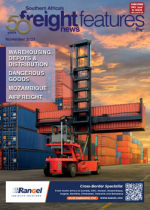In warehousing operations, there's a growing emphasis on automation and, when economically feasible, robotisation. The goal is to enhance efficiency and productivity by eliminating time-consuming, repetitive tasks that typically require the workforce's involvement. For instance, one such job involves extensive walking in sprawling warehouses to pick orders and transport them to staging areas. However, it's important to note that investing in high levels of automation and related technologies is a delicate balancing act in our country, says Cornell Van Rooyen, CEO of warehousing solutions, Africa and Middle East at Rhenus Logistics. "South Africa faces high unemployment rates, and organisations must carefully consider the perceived lower labour costs before committing to these costly automation methods."According to Van Rooyen, there has been a remarkable improvement in the quality of local warehousing operations. "In the last decade, in particular, we have seen an increase in world-class operations. This transformation is evident in several key areas, including the design and construction quality, efficient utilisation of space within warehouses, integrating smart technology into operations, adopting streamlined processes, and an unwavering commitment to continuous improvement."As a result of these advancements, standards have been boosted, often aligning South Africa with global counterparts. Notably, substantial progress has been made in enhancing safety protocols, maintaining rigorous daily housekeeping routines, and diligently managing facilities and infrastructure for long-term sustainability. "While there's still work to be done, we can take pride in how the warehousing industry in South Africa has risen to the occasion in recent years," said Van Rooyen.As customers increasingly demand modern, industry-compliant warehouses, the surge in online shopping has also fuelled the desire for quicker deliveries and the convenience that people increasingly embrace."This has led to a significant expansion of smaller vehicle and motorcycle f leets, particularly for delivering express courier services within under 60 minutes. This increased demand has underscored the necessity for establishing additional satellite branches and hub infrastructure. To meet these requirements, many are turning to traditional hub and spoke distribution models, which enable us to provide the convenience and fast service consumers expect."Moreover, this trend has translated into smaller individual orders for goods, but a substantial increase in the quantity and volume of orders. To accurately, efficiently, and punctually process these elevated order volumes, deploying appropriate technology and establishing well-equipped courier hubs had become imperative, said Van Rooyen."There's still plenty of room for growth in this sector, and this trend will continue to gain momentum. South Africa is very much in the developmental phase regarding this aspect of the industry."

